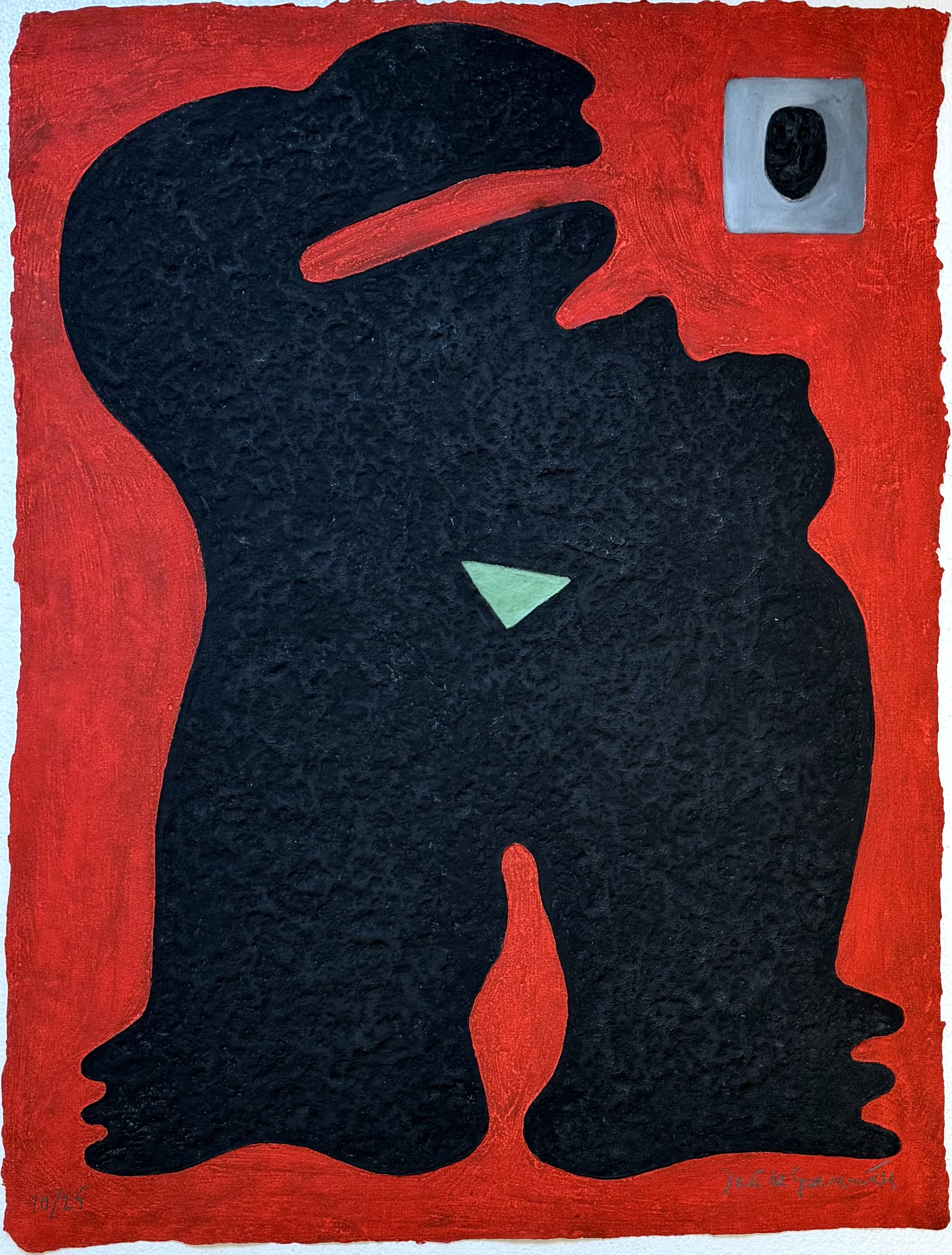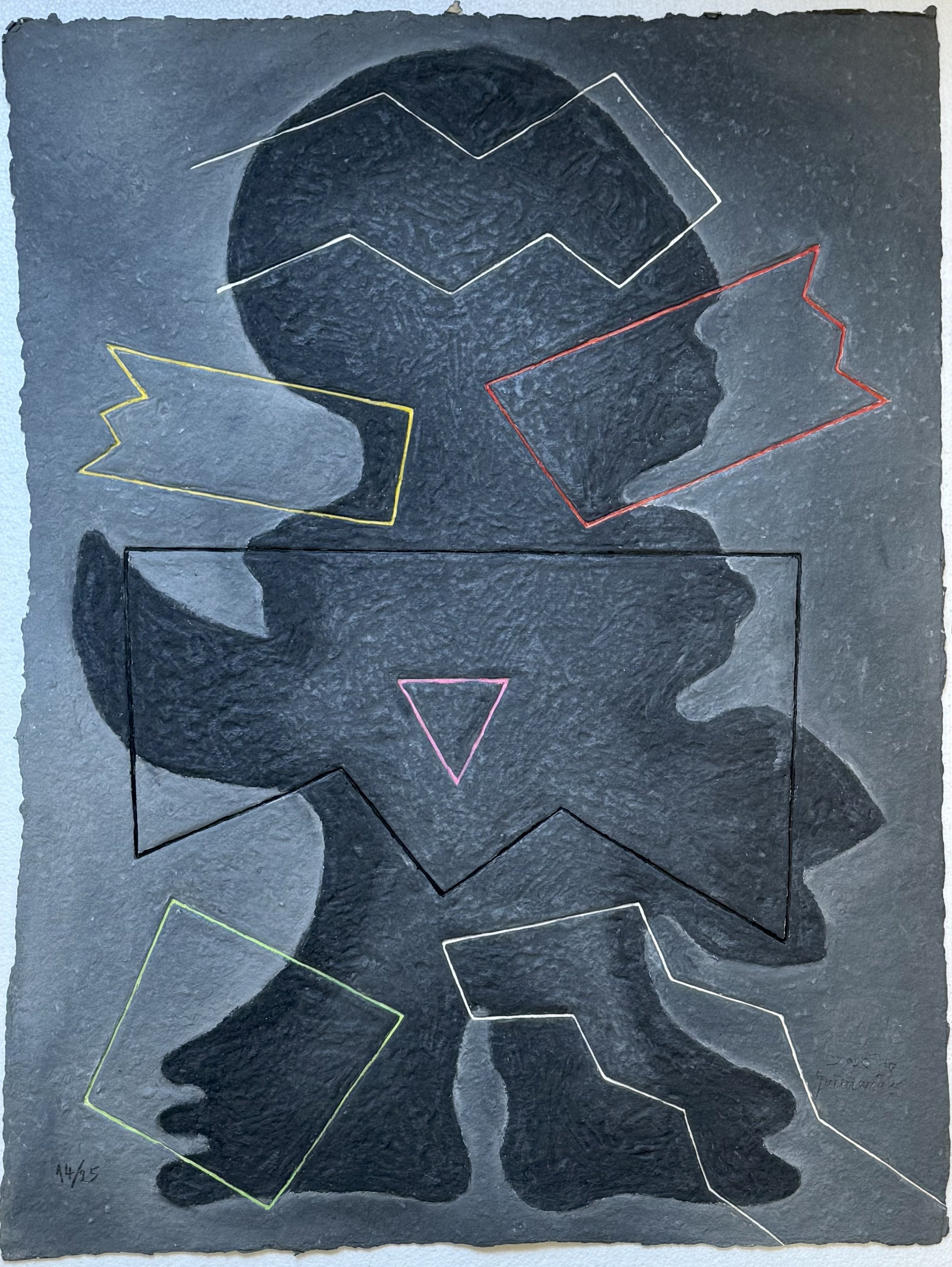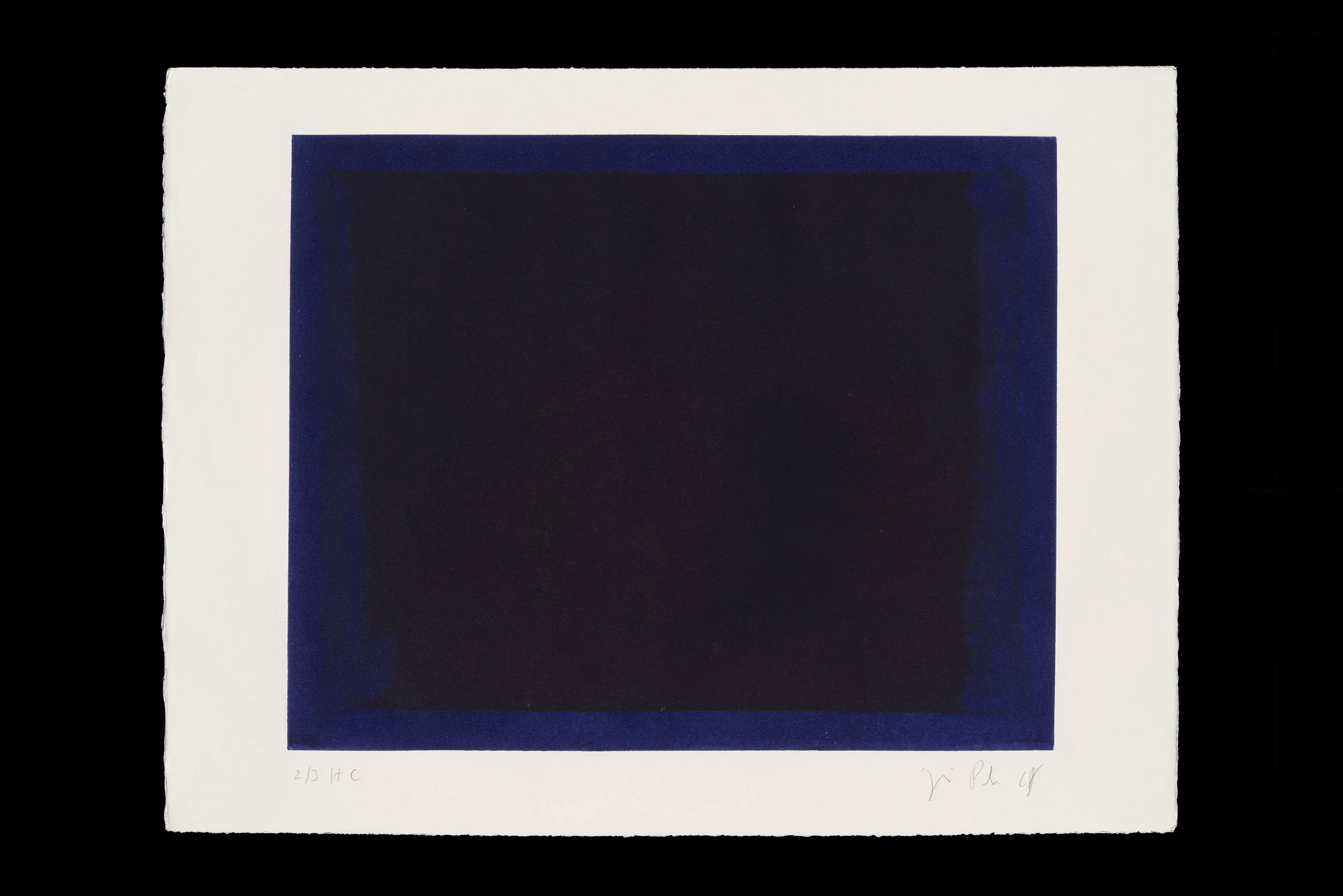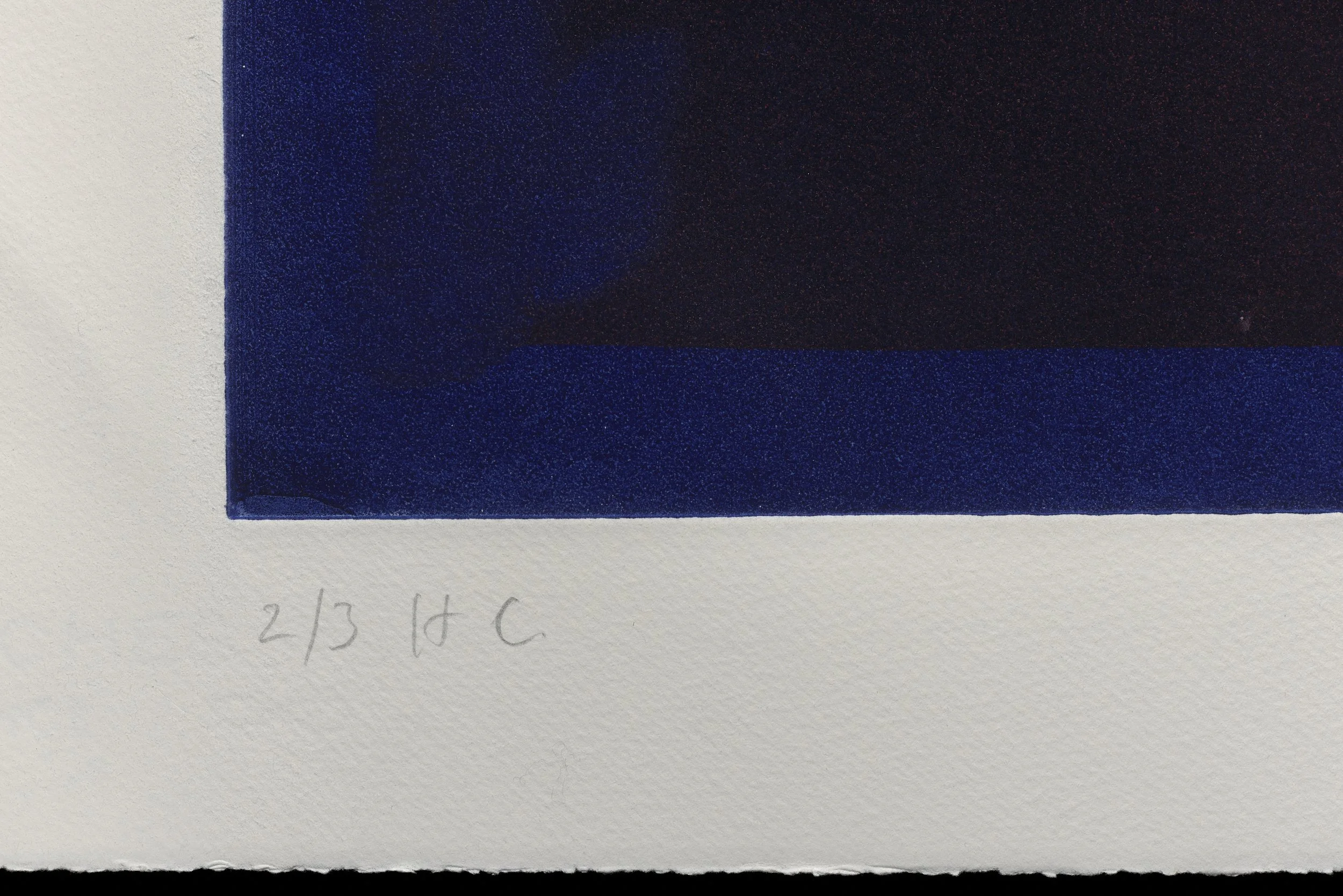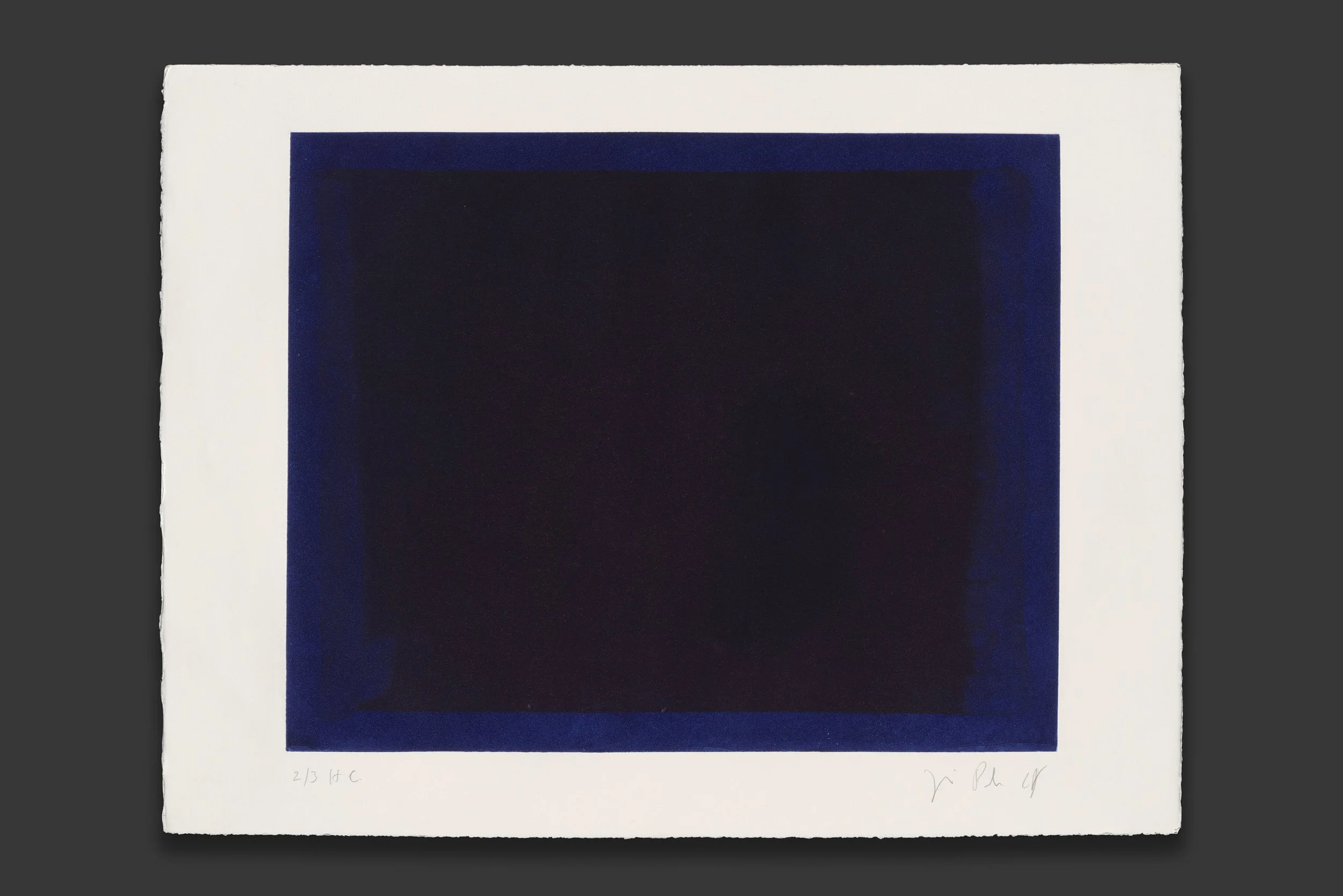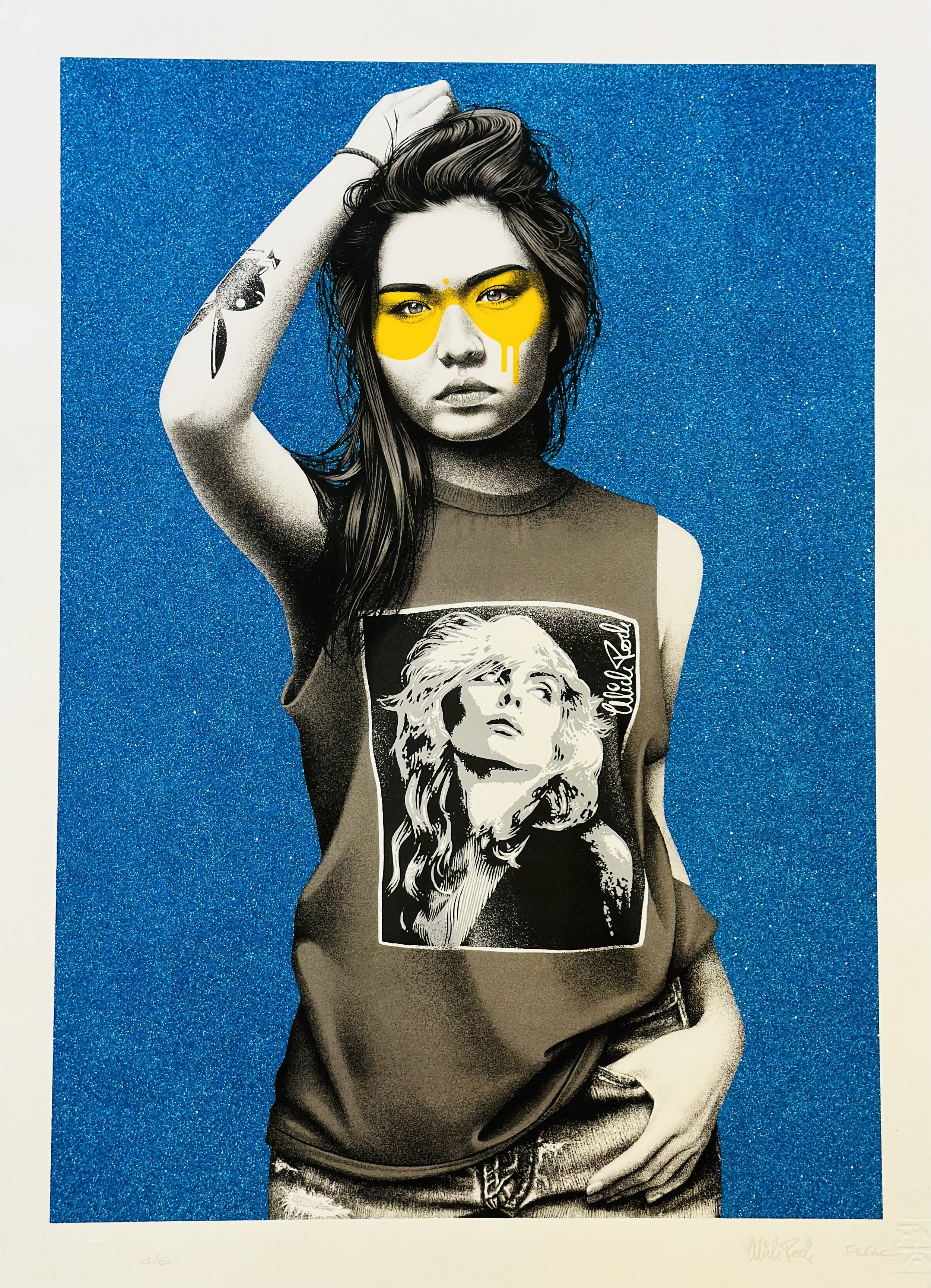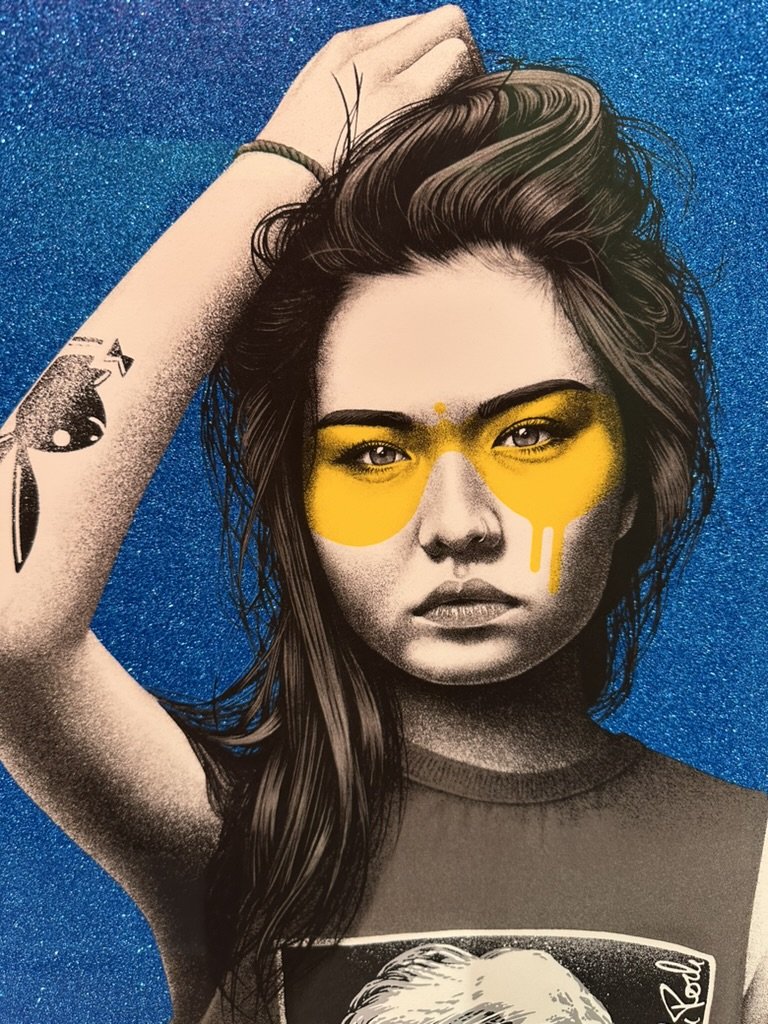 Imagem 1 de 7
Imagem 1 de 7

 Imagem 2 de 7
Imagem 2 de 7

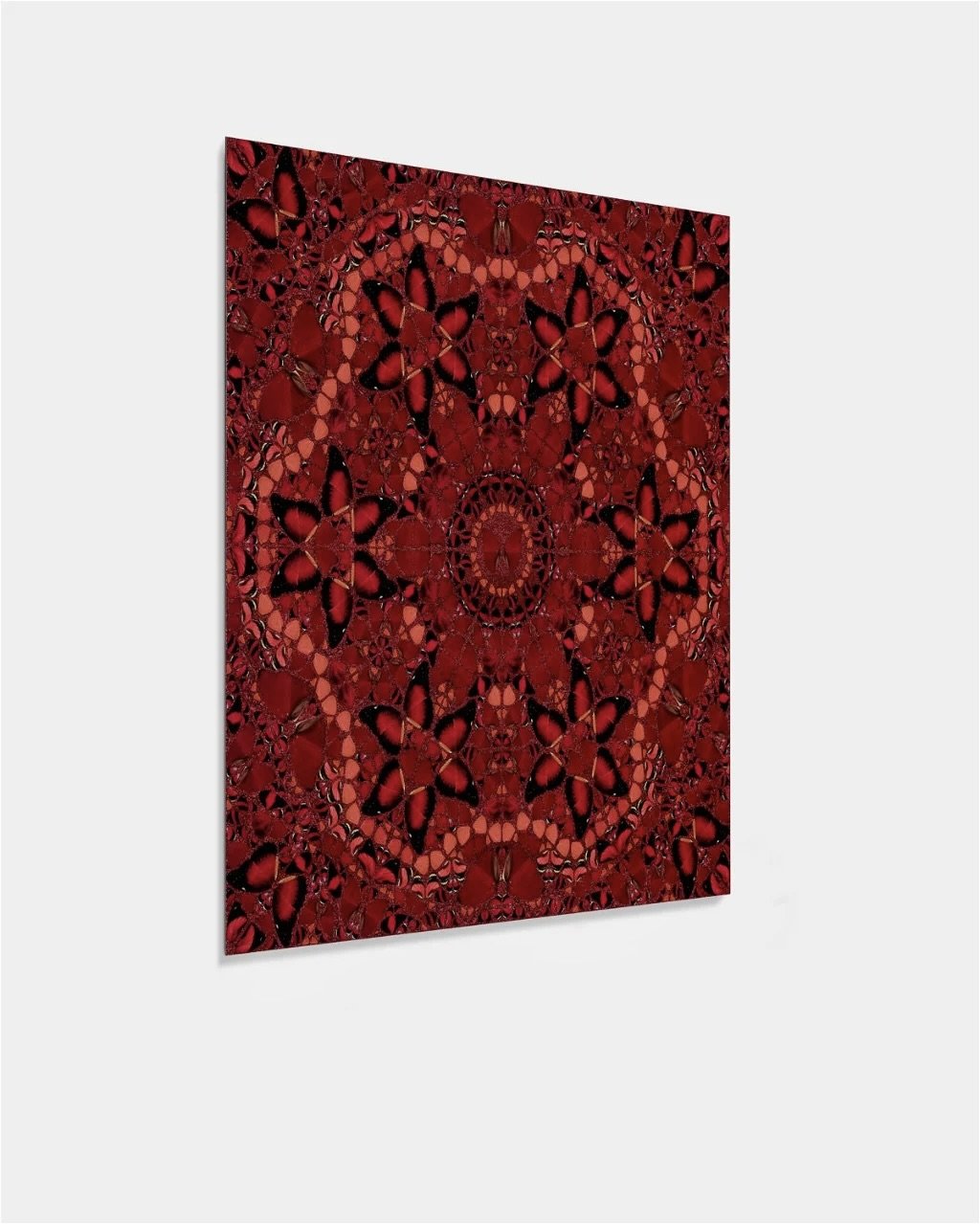 Imagem 3 de 7
Imagem 3 de 7

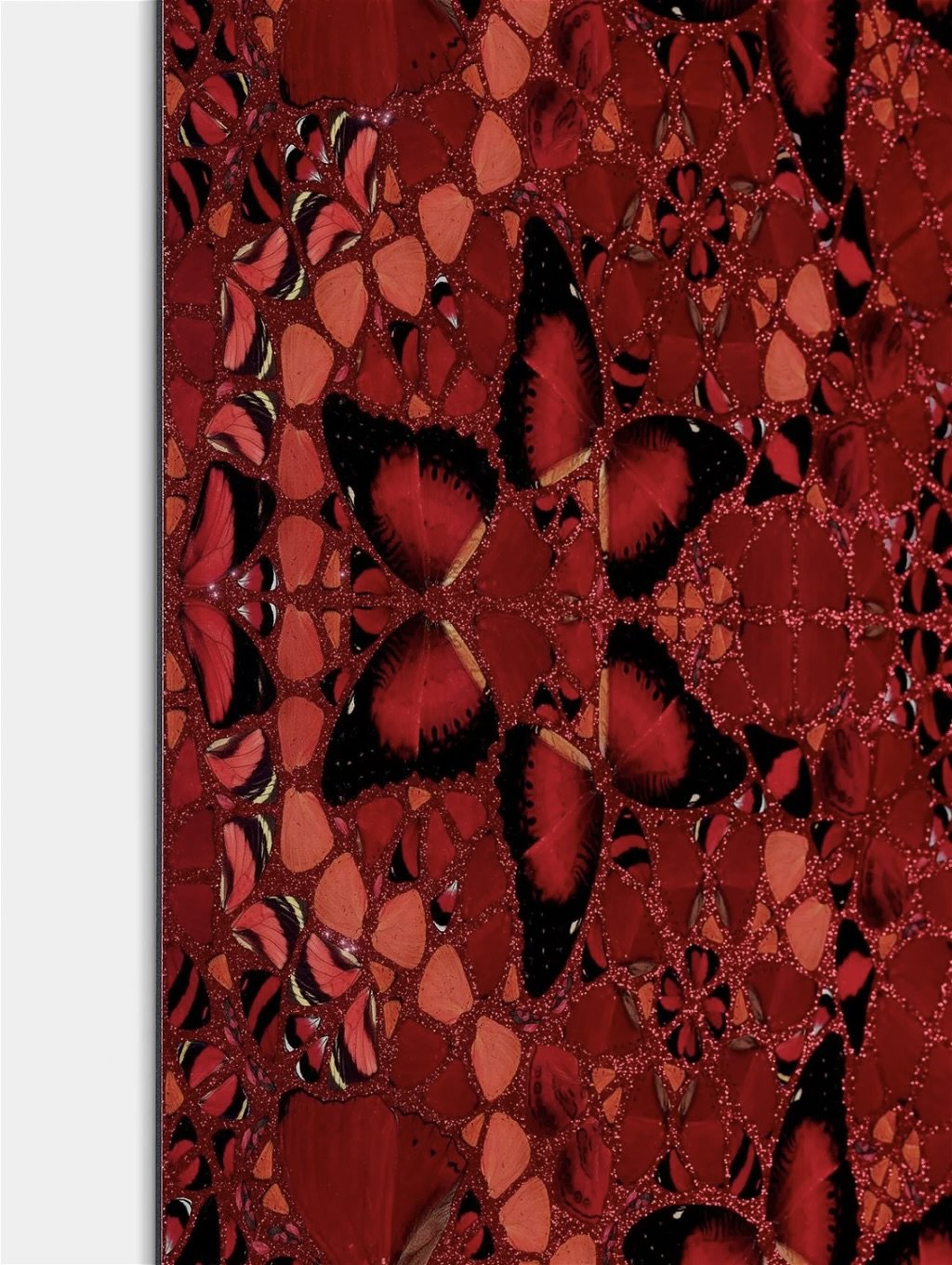 Imagem 4 de 7
Imagem 4 de 7

 Imagem 5 de 7
Imagem 5 de 7

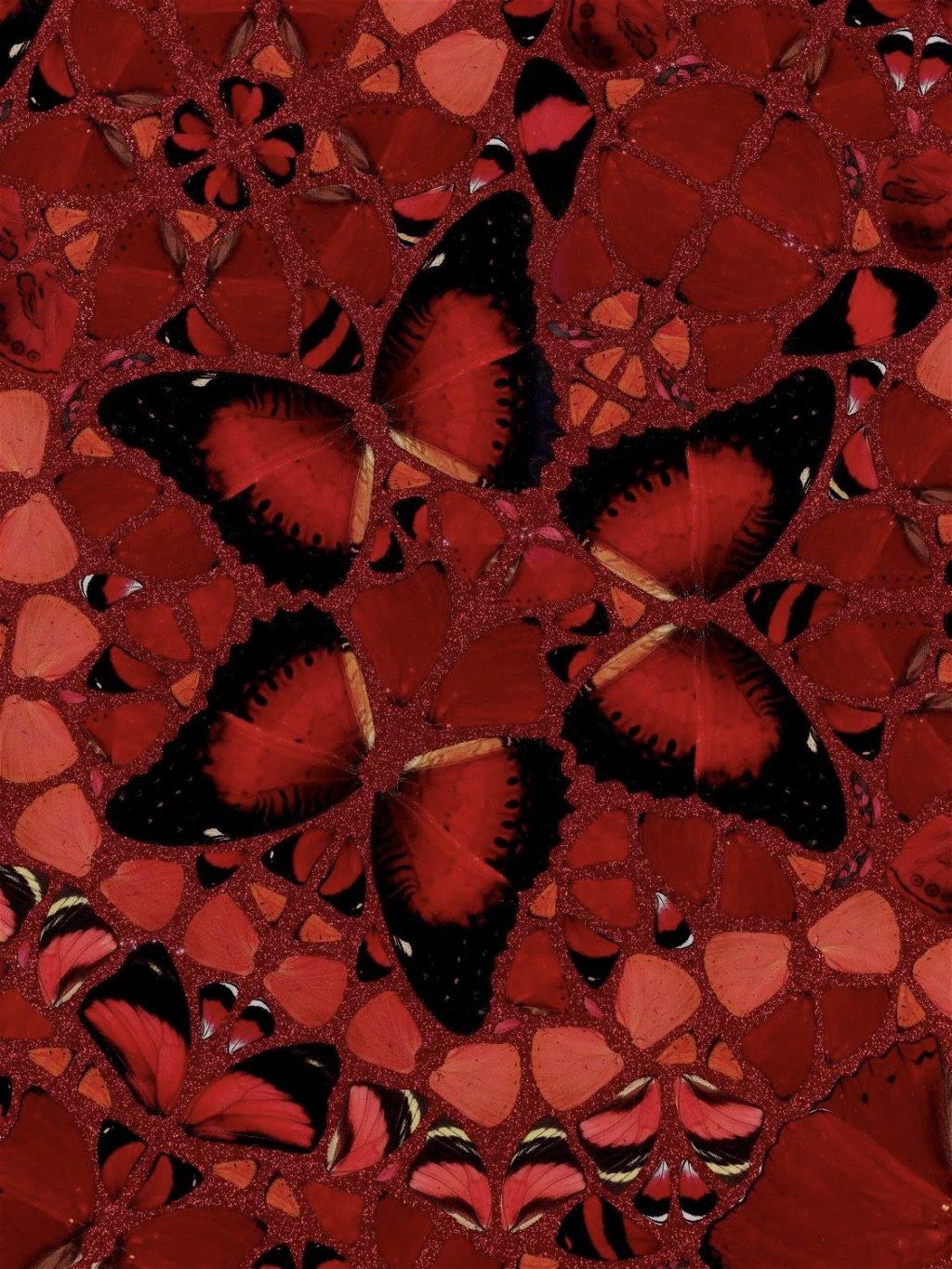 Imagem 6 de 7
Imagem 6 de 7

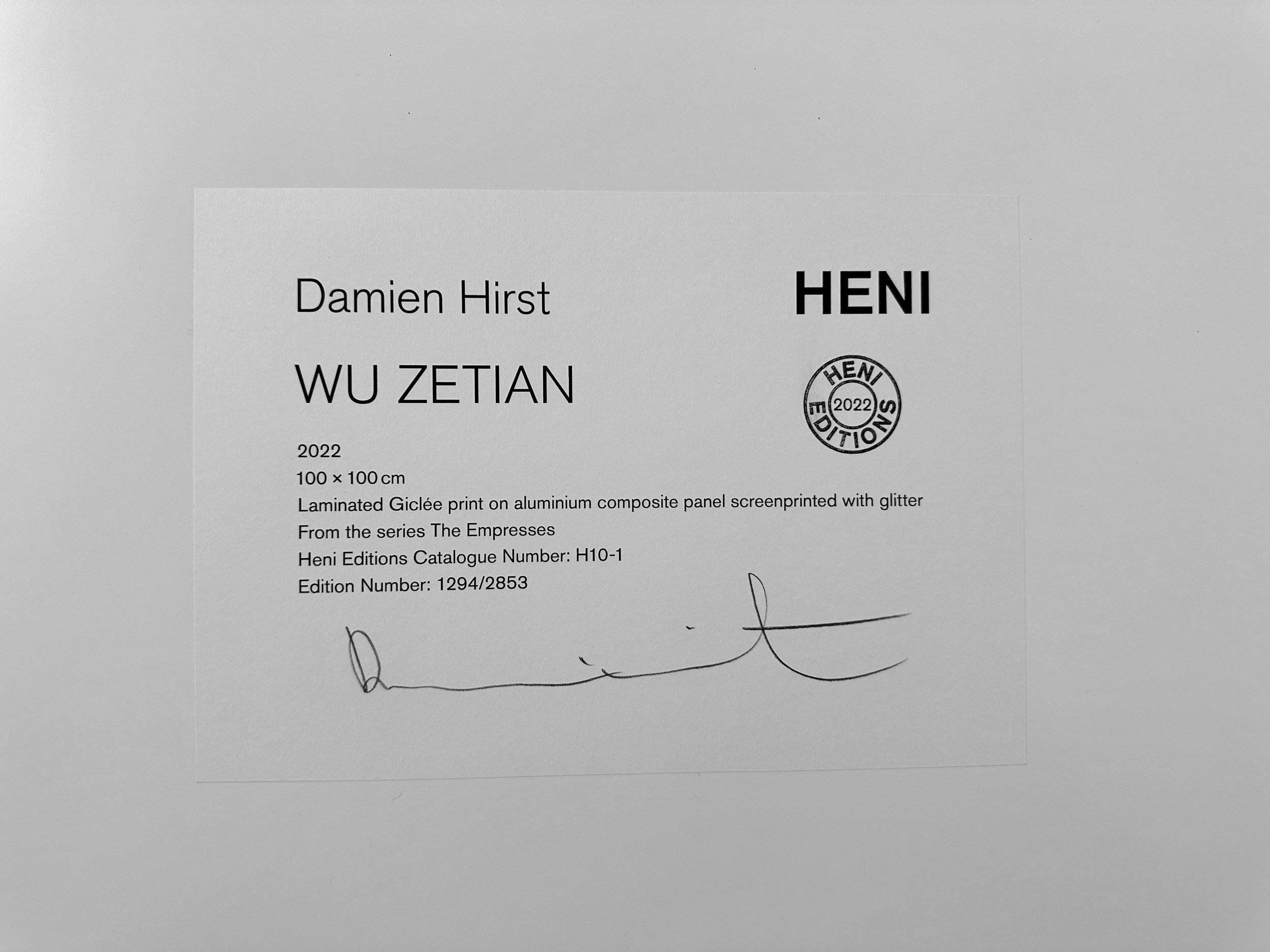 Imagem 7 de 7
Imagem 7 de 7








Damien Hirst | "Wu Zetian", 2022
Série: The Empresses
Impressão Giclée laminada em composto de alumínio, serigrafada com glitter
100 × 100 cm
Número de Edição H10-1
Edição /2853
Assinado e numerado
"The Empresses" (H-10, 2022) marca uma nova iteração na exploração da borboleta por Damien Hirst como símbolo de liberdade, religião, vida e morte. Uma série de cinco impressões Giclée laminadas sobre compósito de alumínio, serigrafadas com glitter, cada impressão retrata imagens de asas de borboleta vermelhas e pretas, dispostas em um padrão caleidoscópico único. As asas cuidadosamente posicionadas parecem móveis e seus padrões se transformam, cada impressão parecendo capturar as borboletas em momentos de voo em várias direções.
Repleto de simbolismo e com uma composição hexagonal em seu centro, "Wu Zetian" recebeu o nome do implacável, porém bem-sucedido governante chinês. Em 655 d.C., Wu Zetian (624-705 d.C.) casou-se com o Imperador Gaozong e tornou-se imperatriz, para grande consternação de muitos estadistas, que ela logo eliminou em um infame reinado de terror que manteve sobre os círculos mais internos do governo. Apesar da política e da violência internas, Wu Zetian provou ser um líder competente, criando estabilidade e consolidando a Dinastia Tang em um momento em que ela parecia estar desmoronando.
No centro de "Wu Zetian" encontra-se um único par de asas de borboleta, circundado por um círculo concêntrico de asas emparelhadas. Este arranjo desabrocha numa formação hexagonal dinâmica e simétrica, com um arranjo de três pares de asas em cada ponta. Esta utilização do número seis para estabelecer a composição evoca o seu reaparecimento em diversas expressões idiomáticas chinesas para denotar boa vontade, estabelecendo o seis como um número da sorte. O número ganha um significado adicional ao relacionar-se com o hexágono, que na China evoca as seis direções (Norte, Sul, Leste, Oeste, Céu e Terra) e, portanto, representa plenitude, harmonia e equilíbrio. Estas associações também evocam a história de Wu Zetian, cuja inteligência, coragem e determinação trouxeram estabilidade ao seu império.
Belíssimos contornos com asas vermelhas brilhantes, os quatro cantos do plano pictórico são preenchidos com arranjos adicionais de asas simples ou emparelhadas. As transições inteligentes entre as estruturas composicionais em "Wu Zetian" conferem uma complexidade cativante à obra, que a deixa aparentemente em constante mudança, conferindo-lhe uma sensação de movimento. Efetivamente, a composição infunde na impressão a sensação de que as borboletas estão de fato vivas e esvoaçando no espaço do observador.
Em "Nūr Jahān", asas simples ou duplas, de vários tamanhos e tons marcantes de vermelho e preto, são dispostas em padrões perfeitamente simétricos. As asas emanam do centro verticalmente, horizontalmente e diagonalmente, criando padrões fascinantes, semelhantes a um caleidoscópio. A composição quadrada focal parece consagrar o par central de asas, com os arranjos de asas circundantes aparentemente recuando, direcionando o olhar para o seu centro. Essa organização tectônica intrincada evoca os esforços arquitetônicos de Nūr Jahān e os gloriosos mosaicos que adornam o túmulo de Agra.
Série: The Empresses
Impressão Giclée laminada em composto de alumínio, serigrafada com glitter
100 × 100 cm
Número de Edição H10-1
Edição /2853
Assinado e numerado
"The Empresses" (H-10, 2022) marca uma nova iteração na exploração da borboleta por Damien Hirst como símbolo de liberdade, religião, vida e morte. Uma série de cinco impressões Giclée laminadas sobre compósito de alumínio, serigrafadas com glitter, cada impressão retrata imagens de asas de borboleta vermelhas e pretas, dispostas em um padrão caleidoscópico único. As asas cuidadosamente posicionadas parecem móveis e seus padrões se transformam, cada impressão parecendo capturar as borboletas em momentos de voo em várias direções.
Repleto de simbolismo e com uma composição hexagonal em seu centro, "Wu Zetian" recebeu o nome do implacável, porém bem-sucedido governante chinês. Em 655 d.C., Wu Zetian (624-705 d.C.) casou-se com o Imperador Gaozong e tornou-se imperatriz, para grande consternação de muitos estadistas, que ela logo eliminou em um infame reinado de terror que manteve sobre os círculos mais internos do governo. Apesar da política e da violência internas, Wu Zetian provou ser um líder competente, criando estabilidade e consolidando a Dinastia Tang em um momento em que ela parecia estar desmoronando.
No centro de "Wu Zetian" encontra-se um único par de asas de borboleta, circundado por um círculo concêntrico de asas emparelhadas. Este arranjo desabrocha numa formação hexagonal dinâmica e simétrica, com um arranjo de três pares de asas em cada ponta. Esta utilização do número seis para estabelecer a composição evoca o seu reaparecimento em diversas expressões idiomáticas chinesas para denotar boa vontade, estabelecendo o seis como um número da sorte. O número ganha um significado adicional ao relacionar-se com o hexágono, que na China evoca as seis direções (Norte, Sul, Leste, Oeste, Céu e Terra) e, portanto, representa plenitude, harmonia e equilíbrio. Estas associações também evocam a história de Wu Zetian, cuja inteligência, coragem e determinação trouxeram estabilidade ao seu império.
Belíssimos contornos com asas vermelhas brilhantes, os quatro cantos do plano pictórico são preenchidos com arranjos adicionais de asas simples ou emparelhadas. As transições inteligentes entre as estruturas composicionais em "Wu Zetian" conferem uma complexidade cativante à obra, que a deixa aparentemente em constante mudança, conferindo-lhe uma sensação de movimento. Efetivamente, a composição infunde na impressão a sensação de que as borboletas estão de fato vivas e esvoaçando no espaço do observador.
Em "Nūr Jahān", asas simples ou duplas, de vários tamanhos e tons marcantes de vermelho e preto, são dispostas em padrões perfeitamente simétricos. As asas emanam do centro verticalmente, horizontalmente e diagonalmente, criando padrões fascinantes, semelhantes a um caleidoscópio. A composição quadrada focal parece consagrar o par central de asas, com os arranjos de asas circundantes aparentemente recuando, direcionando o olhar para o seu centro. Essa organização tectônica intrincada evoca os esforços arquitetônicos de Nūr Jahān e os gloriosos mosaicos que adornam o túmulo de Agra.


